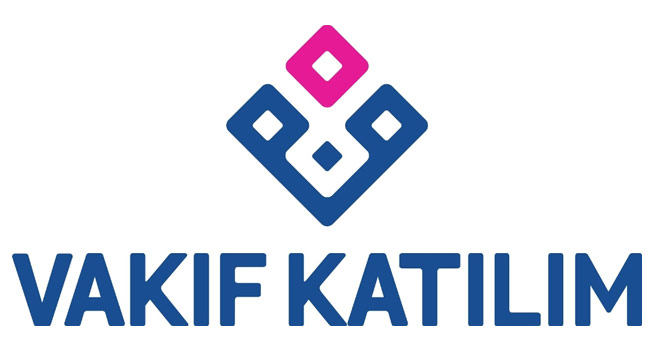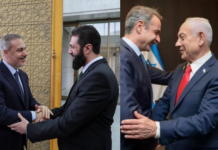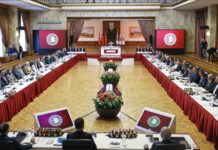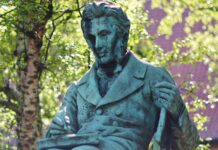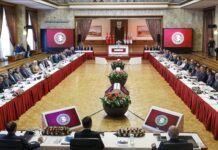Now that Turkish society has regained some stability after three years (May 2013-July 2016) of political turmoil and violence, and the Turkish economy has regained the activity and growth levels of the previous decade, attention is slowly turning to all types of cultural issues.
As was the case in 2005-2009, when the expanding Turkish economy provided impetus (and cash) to the arts sector, interesting street-level developments are appearing yet again. Beginning in 2009, when the worldwide economic recession caused investment flows to slacken, the Turkish arts and pop music sectors suffered a serious regression after a period of flowering creativity. The effect was compounded by post-Gezi tensions. Now, however, Istanbul youth once more seem to be developing subcultures exhibited through clothes and hairstyles. It’s been six years or so since I saw Apaçi-type hairstyles, so called, on public transport, but lately they have reappeared, together with new innovations. That is in addition to all the kids strutting around in currently fashionable puffy coats and skinny pants.
Another good sign is the increase in complaining about the behavior of sonradan görmeler, or the nouveau riche. This means that Turkey’s new rich are once again flush with cash and ready to spend. As the Turkish economy regains the momentum of this century’s first decade, Turkish society continues to change, industrialize, and modernize. If the nouveau riche are once again getting on the nerves of Turkey’s established elites, Turkey’s social transformation must have resumed. Now if only a Turkish film director would make a Turkish La Dolce Vita, as worthy of the original as Fellini’s masterpiece was worthy of its precedents (especially the Satyricon and The Great Gatsby)!
The larger issue is Turkish society’s struggle to reformulate its cultural identity. The ruptures of the Turkish Republic’s early decades are slowly beginning to be recognized as a massive cultural trauma. In other words, the fundamental cultural breaks instituted by top-down decrees in the 1920s and 1930s, such as the Hat Law, the change of the alphabet from Arabic to Latin letters, the formulation of a state-approved national identity, attempts to purge Turkish of its Arabic and Farsi vocabulary, the mandate of a Saturday-Sunday weekend, the Turkish Thesis of History and the Sun-Theory of Language, are now coming to be seen as at best regrettable, and at worst, profoundly agonizing errors. The praise Westerners heaped on such cultural interventions right from the beginning, and which continues to this day, should hence be approached with great caution.
Think of it like this: when the Bolsheviks came to power in Russia, they attempted to reconstruct literally everything about Russian society, from the state, through the economy, to culture and society. Entirely new state institutions were erected, the entire Soviet economy was force-collectivized, and even the arts were expected to express the proletarian world-view through “socialist realism.”
At least as far as the economy and society were concerned, Mustafa Kemal and his supporters refrained from such extremist projects. No systemic change was ever envisioned for the Turkish economy, property relations were never a target, and the Ottoman political system metamorphosed into a republic with no more than the exile of the sultan and his family, the abolition of the caliphate, and some other name changes of a cosmetic nature.
The one area in which Mustafa Kemal did attempt radical change was culture. Many aspects of Turkish culture were targeted in the attempt to remold both the cosmopolitan urban culture of the Late Ottoman empire, as well as provincial, rural or local culture(s), into a homogenously “modern and Turkish” version, which meant that an identity had to be constructed and “appropriate” elements for such an identity had to be either established, “discovered,” or created. Predictably, the main template was the European nation-state, and dozens of reforms were carried out; the changes listed above are only some of the symbolically most significant. In this way the political leadership of the early Turkish Republic, which had not come to power through due democratic process, embarked on an effort to wholly de-link from and even uproot Islamic-Ottoman culture. We can now say confidently that this was not welcomed by anything like a majority of Turkish citizens, though that was overshadowed by decades of authoritarian rule and state-imposed education.
Over the past two or three decades, however, Turkish people have slowly awakened to what was wrenched away from them. The alphabet change, for example, is achieving recognition as a monumental mistake that, while not reversible, needs to be approached with far more circumspection. If Japan can be modern and industrial without discarding Japanese cultural elements and identities, then so can (or could) the Turks. And what about the Christian weekend? Though it is difficult to imagine changing the Turkish weekend back to Friday-Saturday, employers are now providing more flexibility for those who want to attend Friday services.
In the meantime, many Turks are rediscovering Ottoman culture. A nihilistic, denialist rhetoric, designed to deter Turkish people from taking an interest in and connecting with the Ottoman past, is dissipating. More and more people realize that a cultural void exists at the heart of Turkish society, and that modern consumption and ostentation cannot fill that void. Neither Big Macs and BMWs, nor Survivor and trite, three-chord pop songs can provide adequate nourishment for the human soul.
This curiosity is evident in all sectors of Turkish society, and not just among those who have the time and capital to think about culture. Modernization is now less dominated by overt Westernization, and efforts to recover Turkish cultural traditions and to revitalize what can salvaged from the Ottoman past are finally beginning to receive some deserved attention. What this means is that ultimately, Mustafa Kemal’s socio-cultural engineering project was not all that successful, and Turkish society is the better for that partial failure.
The rediscovery of Ottoman culture also features a religious dimension, which is already met with strident opposition at both domestic and international levels. As an illustration, take Vakıf Bank, one of Turkey’s state banks. In line with Islamic finance ideals, it has an interest-free credit union (katılım) branch (not the whole bank, but a branch thereof, set up to cater to an Islamic sub-market). Two years ago this branch adopted a new logo, which I immediately admired both for its cultural statement and aesthetic appeal. To someone who doesn’t know the Arabic alphabet or its derivative Ottoman Turkish version, the new logo (which you can see in the banner picture above) will look only like a group of circles and a dot, and you might find it to be an attractive composition but nothing else.
If they look closely, though, they might notice that the connected circles form the Latin letter “v” for the first letter of Vakıf, meaning foundations or endowments. Still closer, it turns out that the design is Waqf (the Arabic of the word) written in a stylized Arabic script, with the circles representing its three consonants (waw, qaf, feh). Waw, which is written unconnected to the other two letters in Arabic script, is the top circle, and the inter-connected circles are the other two letters. The dot functions as a diacritical mark — both as the dot over the letter feh, and, along with the unconnected circle, as the double dot over the letter qaf. It is a clever construct. It also represents a purposeful re-claiming of the Arabic source of the word vakıf, and hence of Turkish society’s links to the Arabo-Islamic tradition. It is a fitting logo for katılım type of bank (or credit union), which is designed to pay profit shares (dividends) but not interest.
I expect to see more such cultural adjustments or rectifications as Turkish society keeps moving into the future. This should not be understood as some sort of attempt to “go backward.” Turkish society is now exploring its roots in the Ottoman era — the roots that Mustafa Kemal and his comrades, motivated by modernist ideology, tried to extirpate. What has been done has been done, and no one seriously proposes to turn back the clock. But foreigners should expect to encounter Turkish citizens who are as interested in and proud of their Ottoman past as any post-imperial British or French citizen.


